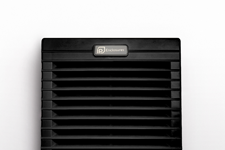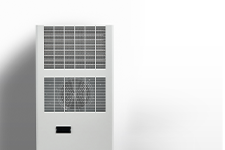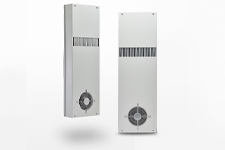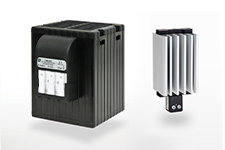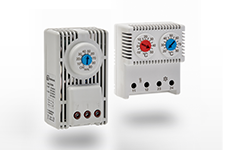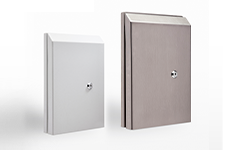Climate Protection of Electrical Enclosures & Data Racks
Industrial climate control technology for electrical enclosures and data racks
Extreme weather and climate events are increasing throughout the world in frequency and severity. These events include extreme heat, extreme cold, drought, wildfires, tropical cyclones, floods, ice and snow storms. Unfortunately, these extreme events often lead to catastrophic losses including damage to property and infrastructure resulting in power and control systems outages, and communications network failures. Although the weather and climate cannot be controlled, the climate within the electrical enclosure can be controlled. By controlling the enclosure climate within the ever-changing external climate, we are able to protect the contents of the enclosure to ensure that connected and networked infrastructure that it controls will safely continue to operate.
With every 10°C rise in room temperature the life expectancy of electronics is halved. In contrast, cooling electronics mitigates risk of failure and outages while increasing service life. Heat is generated from a variety of sources including inside of the enclosure from power supplies, controllers, drives, transformers, server racks, networking equipment and components. Heat is also generated from outside of the enclosure through high ambient air temperatures, extreme weather, irradiance, and adjacent industrial equipment and processes. Enclosures are fundamentally designed to protect components from the environment while protecting people from electrical shock. The level of protection is defined by IP Ratings described in IEC/EN/AS 60529 and identify the level of protection provided by enclosures including the protection of people from hazardous parts inside enclosures, and the protection of components from ingress of solids and water. However, there is an increasing need to protect enclosures and their contents from ever-changing harsh climates and extreme weather. As electrical enclosure specialists, we assist customers throughout the world in protecting critical infrastructure through harsh climates and extreme weather.
Electrical Enclosure & 19″ Rack Cabinet Heat Dissipation
Equipment and components within low voltage switchgear assemblies and data racks generate heat. This may be exacerbated by incorrect sizing of switchgear, conductors, contacts, densely compacted assemblies, magnetic fields and eddy currents. Heat generated from internal components or fluctuating temperatures from the external environment including irradiance, or heat generated from direct sunlight, can cause wide temperature fluctuations. The accumulation of heat in an enclosure is damaging to components. If exposed to high heat, the lifecycle of components is negatively impacted. Overheating can lead to failure of components and outages of critical infrastructure. To mitigate the risk of failure, heat must be dissipated. To manage the climate within electrical enclosures and data racks, we need to understand the conditions and calculate accordingly. The internal temperature is controlled by transferring heat into or out of the enclosure. This involves conduction, convection and radiation.
- Conduction is the flow of heat through a solid ie. the enclosure.
- Convection is the movement of heat through a liquid or gas to the surface of a solid.
- Radiation is the transfer of thermal energy via conversion to/from electrical energy eg. a heater. Irradiance on the enclosure surface is measured in W/m2.
If the electrical enclosure or data rack is closed with a high IP rating, heat may be dissipated through thermal conduction via the walls. Conductive cooling may be satisfactory for applications with low heat loads < 50W in low ambient temperatures. Increasing the surface area will assist with conduction. The maximum ambient temperature and the maximum temperature inside the enclosure are the main factors determining potential heat transfer and adequacy of heat dissipation via conduction.
While thermal conduction relies on dissipating heat via the enclosure walls from inside to outside with a positive temperature differential, if the electrical enclosure is open or has a low IP rating, heat can be dissipated through convection via air circulation from inside to outside. Natural or forced convection relies on dissipating heat via air circulation from inside to outside with a positive temperature differential. Convection is the most common method to control the internal temperature of an enclosure. Natural convection is caused by hot air rising resulting in natural air circulation while forced convection uses a fan to provide higher heat transfer rates. Locating a fan at the bottom of the enclosure with a vent at the top will provide efficient forced convection.
Thermal Management Product Selection
Electrical enclosure climate protection products provide optimum conditions inside the enclosure. The differential temperature will largely determine what type of product may be used. Our electrical enclosure climate protection product range includes fans, filters, heat exchangers, air-conditioners, anti-condensation heaters, controllers, pressure compensation valves and condensate drains. We also provide integrated climate controlled electrical enclosure and data rack solutions. As experts in the field of climate protection of electrical enclosures and data racks, we assist customers throughout the world in protecting critical infrastructure through harsh climates and extreme weather. Contact our electrical enclosure specialists for product selection and technical advice.
Our online Thermal Calculator assists customers to calculate and select correct products. Visit our online Thermal Calculator and protect your electrical components and equipment today.
Don't risk it - Calculate it
Your Digital Solution for Climate Control Management in Electrical Enclosures and Cabinets

